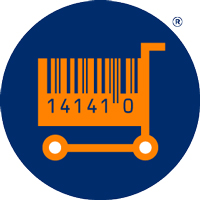DIGITAL SOLUTIONS
SECTION ONE
SECTION TWO
An Update on the GS1 US Retail Grocery Initiative
By Angela Fernandez
In this new “age of the consumer,” shoppers want access to more information about the products they
buy, and CPG brands are working hard to cater to consumers’ concerns about health, sustainability and
convenience. Couple this with retailers reeling from Amazon’s bid for Whole Foods, and it’s no wonder
CPG companies are avidly pursuing more digitization and efficiency to maintain loyalty regardless of sales
channel.
The GS1 Retail Grocery Initiative has been an open forum designed for CPG companies, distributors, retailers and solution providers to make sense of emerging trends and identify new business priorities. Initiative members collaborate in focused workgroups to discuss their experiences and leverage the power of global GS1 Standards to move the entire retail grocery industry forward.
Often referred to as the common language of business, GS1 Standards encompass more than just the barcode seen at checkout. They include unique product identification numbers, electronic data exchange methods and collaborative best practices that enable efficient and unified commerce. They are the most widely used supply chain standards in the world, and are designed to overcome the limitations of using proprietary coding systems to make the supply chain agile and responsive to customers.
In just three years, the Initiative has made progress in four key topics that will bolster the CPG industry as it faces unprecedented changes.
Product Information and Images
Extended product attributes, including sustainability information or a product’s origin are being carefully scrutinized by consumers who want to evaluate if a product fits into their lifestyles, religious beliefs or dietary restrictions. Images also play a crucial role with the rise of e-commerce in grocery shopping.
A special workgroup is focusing on harmonizing the way product attributes are exchanged through the use of the Global Data Synchronization Network (GDSN), an interoperable network that allows brands to share product data with their customers and trading partners. Earlier this year, the group published a new guideline that provides a roadmap for using GS1 Standards to convey detailed product information. Industry leaders rely on GDSN to exchange crucial information ranging from trading partner details to consumer facing attributes. By leveraging GDSN as one source of the truth, they can more effectively fuel the online product listings and seamless e-commerce experiences that consumers have come to expect.
Last year, the group produced a similar guideline focused on images, which has been a useful resource for standardizing image capture, naming and sharing. With hero images, montages and video becoming necessary to sell a product, this group is laying a solid foundation for grocery’s new Amazon/Whole Foods, e-commerce driven frontier.
Supply Chain Visibility
CPG companies can achieve significant internal process improvements and demonstrate a strong commitment to food traceability by implementing supply chain visibility based on GS1 Standards. Recalls or withdrawals are caused by a number of reasons - undeclared allergens, foodborne illness, and cross contamination. With enhanced traceability procedures, businesses can prepare for crisis situations and avoid the damage a widespread recall can inflict for months afterward.
To support enhanced traceability in the retail grocery industry, the Supply Chain Visibility Workgroup is examining best practices for case-level traceability. This means that by capturing important traceability information such as product and location data, production dates and batch/lot numbers, trading partners can support visibility of the product’s movement through the distribution channel.
Operational Efficiencies
Implementing industry standards can support new distribution models and ensure inventory accuracy and efficiency in transportation and logistics. The Operational Efficiencies Workgroup is examining best practices on order changes, capturing CPG success stories, and overall tackling how to gain the flexibility needed to compete online and embrace digital disruption.
Some CPG companies sensed the shift toward e-commerce earlier this year and began testing new distribution methods. Kellogg’s, for example, started delivering product to retail distribution centers (DCs) in place of individual stores to save on delivery costs, according to recently published reports. This marks one of the first CPG companies to eliminate the Direct Store Delivery (DSD) model. If consumers are not going to be exclusively coming to stores, some companies are taking a hard look at where resources should best be allocated.
Data Quality
In recent years, retailers have made it clear that manufacturers need to supply accurate and complete product information. With the data and e-commerce explosion, even tiny inconsistencies in product information can become distribution and sales inhibitors. In January, CPG companies that are a part of both the retail grocery and foodservice industries formed a joint data quality workgroup. Participating companies have benefited tremendously by focusing on improving supply chain data such as product weights and dimensions, which allow for significant operational and logistical savings. They’ve now turned their focus on consumer-facing attributes to help create more consistent online and in-store experiences. If supplier partners provide a single, complete, and standardized set of product images and data - a set that provides dependable product representation across all consumer channels - retailers can reduce item set-up time and enhance speed-to market, leading to more opportunities for all.
Ultimately, through the GS1 US Retail Grocery Initiative, members have the opportunity to collaborate to address critical issues and drive faster solutions.
Angela Fernandez is Vice President of Retail Grocery and Foodservice at GS1 US. More information on the initiative is available at www.gs1us.org/retailgrocery.
SECTION THREE

